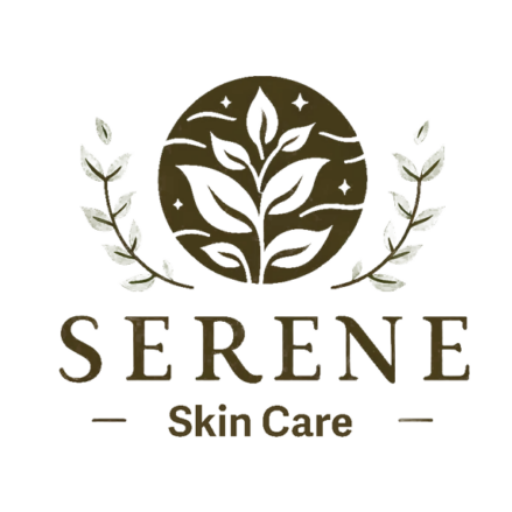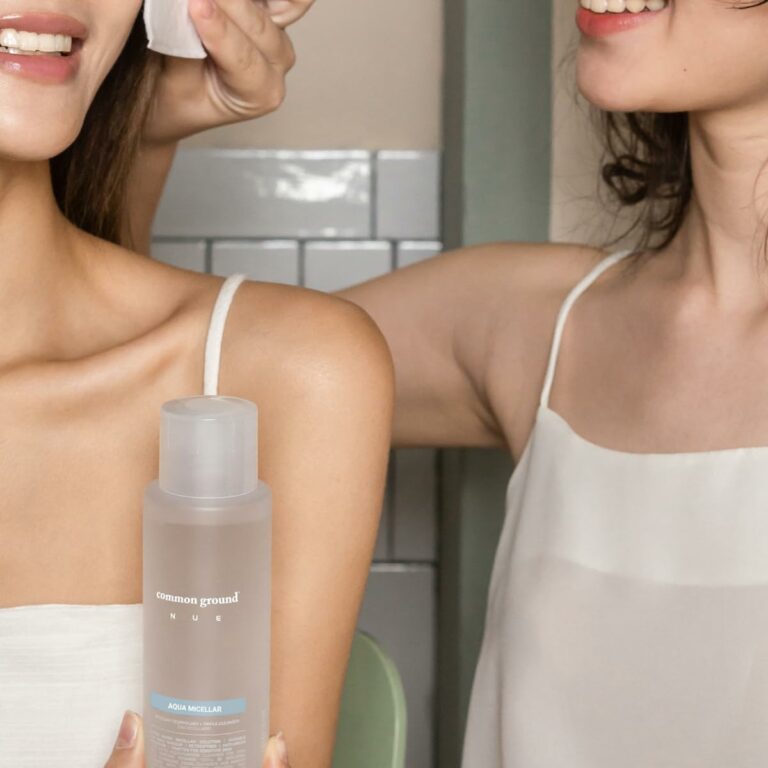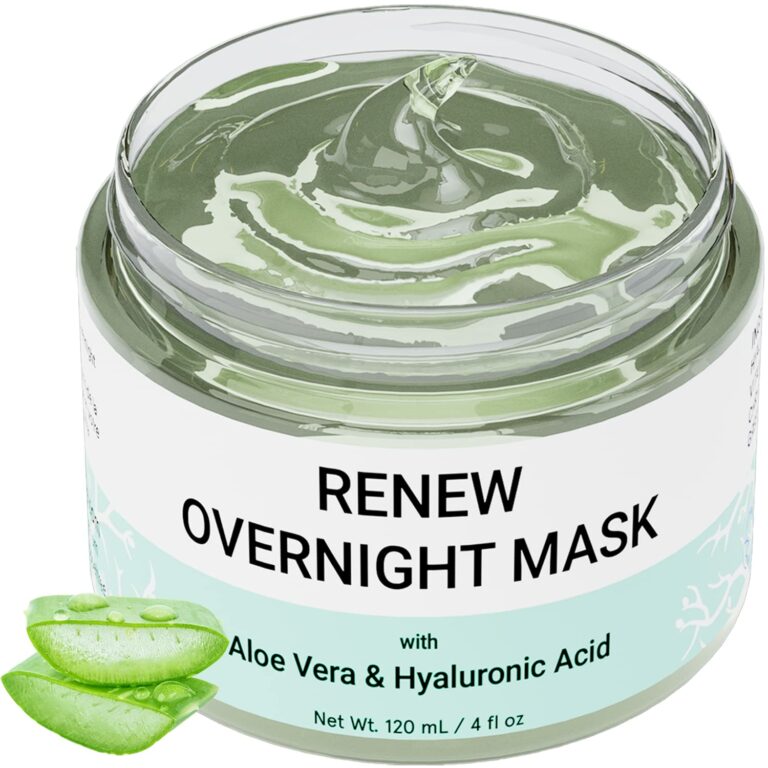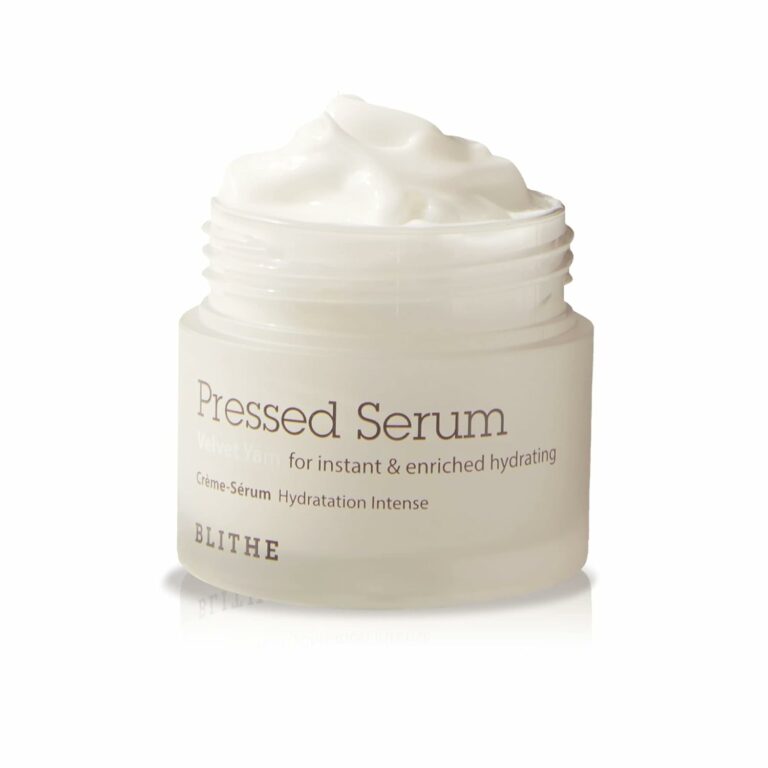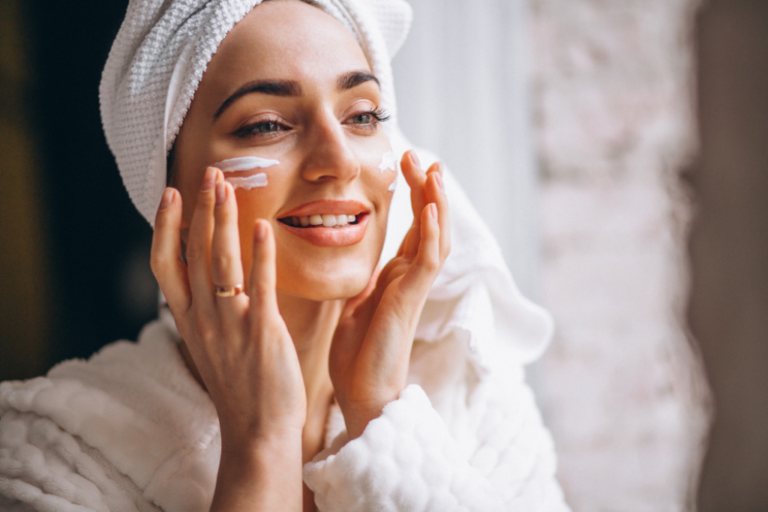In the world of skincare, a revolutionary new treatment has emerged, promising to transform the way we care for our skin: Bio-Bracing. This innovative technique utilizes the power of biotechnology and non-invasive procedures to enhance the skin’s natural healing process and restore its youthful radiance. By harnessing the body’s own regenerative capabilities, Bio-Bracing offers a safe and effective solution for a wide range of skincare concerns, from acne and scarring to aging and sun damage. With its remarkable potential and growing popularity, Bio-Bracing is paving the way for the future of skincare treatments, bringing us one step closer to achieving flawless, rejuvenated skin.
Understanding Bio-Bracing
Definition of Bio-Bracing
Bio-Bracing is a revolutionary approach in skincare treatments that harnesses the power of beneficial microorganisms to improve the overall health and appearance of the skin. It involves the use of bioactive ingredients, such as probiotics and prebiotics, to restore and maintain the balance of the skin’s microbiome. By nurturing the skin’s natural ecosystem, bio-bracing treatments aim to enhance the skin’s barrier function, reduce inflammation, and improve hydration.
How Bio-Bracing Works
Bio-Bracing works by promoting the growth of beneficial microorganisms on the skin, which in turn helps to restore and maintain a healthy skin microbiome. The microbiome is a complex community of microorganisms that reside on the skin’s surface. These microorganisms play a crucial role in maintaining the skin’s health and function. However, various factors such as pollution, harsh skincare products, and antibiotics can disrupt the balance of the microbiome, leading to skin issues.
Bio-Bracing treatments typically involve the application of probiotic-infused skincare products or the use of prebiotic-rich skincare regimens. Probiotics are live microorganisms that provide a multitude of benefits to the skin, including balancing the microbiome, reducing inflammation, and promoting skin barrier repair. On the other hand, prebiotics are non-living substances that serve as food for the beneficial microorganisms on the skin, helping them thrive and multiply.
Benefits of Bio-Bracing
Bio-Bracing offers a range of benefits that make it a promising alternative to traditional skincare treatments. By restoring the balance of the skin’s microbiome, bio-bracing treatments can improve the skin’s overall health and appearance. Some of the key benefits of bio-bracing include:
-
Improved Skin Barrier Function: The skin’s barrier serves as a protective shield against environmental aggressors. Bio-bracing treatments help strengthen this barrier by promoting the growth of beneficial microorganisms, which enhance the skin’s resilience and ability to ward off pathogens.
-
Reduced Inflammation and Redness: Imbalances in the skin’s microbiome often lead to inflammation and redness. Bio-bracing treatments help restore the microbiome’s equilibrium, reducing inflammation and calming the skin.
-
Enhanced Skin Hydration: A healthy microbiome plays a crucial role in maintaining optimal skin hydration. Bio-bracing treatments improve the microbiome’s ability to retain moisture, resulting in better skin hydration and a more radiant complexion.
-
Reduction in Skin Sensitivity: Bio-bracing treatments have been shown to reduce skin sensitivity by strengthening the skin’s barrier and calming inflammation. This makes them particularly beneficial for individuals with sensitive skin prone to irritation.
Bio-Bracing vs Traditional Skincare Treatments
Comparison with Traditional Skincare Treatments
Traditional skincare treatments often focus on addressing specific skin concerns, such as acne or wrinkles, using ingredients that may disrupt the skin’s natural microbiome. They typically rely on harsh chemicals that can strip the skin of its natural oils and disrupt the delicate balance of the microbiome.
On the other hand, bio-bracing treatments take a more holistic approach by working with the skin’s ecosystem. Rather than targeting specific skin issues, bio-bracing treatments aim to restore and maintain a healthy microbiome, which in turn helps to improve overall skin health and address a range of concerns.
Advantages of Bio-Bracing
Bio-bracing offers several advantages over traditional skincare treatments. Firstly, by focusing on the health of the skin’s microbiome, bio-bracing treatments tackle the root cause of many skin issues, rather than merely addressing symptoms. This holistic approach can lead to longer-lasting results and improved overall skin health.
Furthermore, bio-bracing treatments are often gentler on the skin compared to traditional treatments. This is because they work in harmony with the skin’s natural ecosystem, rather than relying on harsh chemicals. As a result, bio-bracing treatments have a lower risk of causing irritation or sensitization, making them suitable for a wide range of skin types.
The Science Behind Bio-Bracing
Role of Microorganisms in Skincare
Microorganisms play a vital role in maintaining the health and function of the skin. The skin’s microbiome is a diverse community of bacteria, fungi, and other microorganisms that live on its surface. These microorganisms interact with the skin cells and secrete substances that contribute to the skin’s barrier function, immune response, and overall well-being.
When the balance of the skin’s microbiome is disrupted, various skin issues can arise, including dryness, inflammation, and acne. By restoring the microbiome’s balance, bio-bracing treatments help address these underlying issues and improve the overall health of the skin.
Bioactive Ingredients in Bio-Bracing Treatments
Bio-bracing treatments utilize bioactive ingredients, such as probiotics and prebiotics, to nourish and support the skin’s microbiome. Probiotics, often derived from lactic acid bacteria or other beneficial microorganisms, are live microorganisms that can provide a range of benefits to the skin.
Probiotics help balance the skin’s microbiome by outcompeting harmful bacteria and restoring the natural diversity of microorganisms on the skin. They also produce antimicrobial substances that can inhibit the growth of pathogenic bacteria and fungi, reducing the risk of infections.
Prebiotics, on the other hand, are non-living substances that act as food for the beneficial microorganisms on the skin. By providing these microorganisms with the nutrients they need to thrive, prebiotics help maintain a healthy and diverse microbiome. They also help strengthen the skin’s barrier function by promoting the production of ceramides, which are essential for maintaining optimal skin hydration.
Types of Bio-Bracing Treatments
Microbiome Restoration Treatments
Microbiome restoration treatments involve the use of probiotics and prebiotics to restore the balance of the skin’s microbiome. These treatments often come in the form of serums, creams, or masks that are applied topically to the skin.
Probiotic-infused skincare products contain live microorganisms that help rebalance the microbiome and improve skin health. Prebiotic-rich formulations, on the other hand, provide the necessary nutrients to support the growth of beneficial microorganisms.
Probiotic Infused Skincare Products
Probiotic-infused skincare products have gained popularity in recent years. These products often contain live strains of bacteria that are specifically selected for their beneficial effects on the skin. They can be found in various forms, including cleansers, moisturizers, and serums.
By topically applying probiotics to the skin, these products help restore the balance of the microbiome and improve skin health. They can help reduce inflammation, strengthen the skin’s barrier, and enhance hydration, resulting in a healthier and more vibrant complexion.
Prebiotic-rich Skincare Regimen
A prebiotic-rich skincare regimen involves the use of skincare products and formulations that contain prebiotics. These products provide the necessary nutrients to support the growth of beneficial microorganisms on the skin.
Prebiotics in skincare products can take the form of natural ingredients, such as oatmeal, honey, or aloe vera, that help nourish and support the skin’s microbiome. By incorporating prebiotic-rich products into their skincare routine, individuals can promote a healthy and balanced microbiome, leading to improved skin health.
Benefits of Bio-Bracing Treatments
Improved Skin Barrier Function
One of the major benefits of bio-bracing treatments is the improvement in skin barrier function. A healthy microbiome is essential for maintaining the integrity and strength of the skin’s barrier. By restoring the balance of the microbiome and promoting the growth of beneficial microorganisms, bio-bracing treatments strengthen the skin’s barrier, reducing transepidermal water loss and protecting against environmental aggressors.
Reduced Inflammation and Redness
Imbalances in the skin’s microbiome often lead to inflammation and redness. Bio-bracing treatments help restore the microbiome’s equilibrium, reducing inflammation and calming the skin. Probiotics, in particular, have been shown to have anti-inflammatory properties and can help alleviate symptoms of inflammatory skin conditions, such as acne or rosacea.
Enhanced Skin Hydration
A healthy microbiome plays a crucial role in maintaining optimal skin hydration. Bio-bracing treatments improve the microbiome’s ability to retain moisture, resulting in better skin hydration. Prebiotic-rich products, in particular, help promote the production of ceramides, which are important for maintaining the skin’s water-holding capacity.
Reduction in Skin Sensitivity
Bio-bracing treatments have been shown to reduce skin sensitivity by strengthening the skin’s barrier and calming inflammation. This makes them particularly beneficial for individuals with sensitive skin prone to irritation. By restoring the balance of the skin’s microbiome, bio-bracing treatments can help improve skin resilience and reduce the risk of reactions to external irritants.
Challenges and Limitations of Bio-Bracing
Effectiveness for Different Skin Types
While bio-bracing treatments have shown promising results for many individuals, their effectiveness may vary depending on skin type and individual characteristics. Some individuals may experience significant improvements in their skin health and appearance, while others may see more modest results. It is important to note that bio-bracing treatments may not be a one-size-fits-all solution and that personalized approaches may be necessary to optimize outcomes.
Long-term Efficacy
Another challenge of bio-bracing treatments is the long-term efficacy and sustainability of results. While these treatments can provide immediate benefits and short-term improvements, maintaining a healthy microbiome over time may require ongoing and consistent use of bio-bracing products. More research is needed to understand the long-term effects of bio-bracing and the best strategies for sustaining a healthy skin microbiome.
Regulatory Approvals and Safety Concerns
Bio-bracing treatments are still a relatively new concept in skincare, and there are ongoing discussions regarding their regulatory approvals and safety. As the popularity of bio-bracing continues to grow, it is important to ensure that these treatments meet rigorous safety standards and that the claims made by manufacturers are substantiated by scientific evidence. Regulatory bodies are actively working to establish guidelines for bio-bracing products to ensure consumer safety.
Integration of Bio-Bracing in Skincare Routines
Step-by-Step Guide for Bio-Bracing Skincare
Integrating bio-bracing treatments into skincare routines can be a straightforward process. Here is a step-by-step guide for implementing bio-bracing skincare:
-
Cleanse: Start with a gentle cleanser that respects the skin’s natural pH balance and doesn’t disrupt the microbiome.
-
Apply Bio-Bracing Products: Choose probiotic-infused skincare products or prebiotic-rich formulations. Apply them according to the product instructions, focusing on areas of concern or where microbiome balance restoration is needed.
-
Moisturize: Follow up with a moisturizer that provides hydration and helps maintain the skin barrier. Look for products that contain ingredients supporting the skin’s microbiome, such as ceramides or hyaluronic acid.
-
Protect: Finish the routine with a broad-spectrum sunscreen to shield the skin from harmful UV rays and further protect the skin’s barrier function.
Incorporating Bio-Bracing into Existing Regimens
For those already following a skincare routine, incorporating bio-bracing can be as simple as replacing certain products with bio-bracing alternatives. Look for probiotic-infused cleansers, serums, and moisturizers that align with your specific skin concerns and needs. Alternatively, introduce a prebiotic-rich product into your existing regimen to nourish and support the skin’s microbiome. Start slowly and observe how your skin responds to the changes, gradually increasing the use of bio-bracing products as desired.
Future Directions in Bio-Bracing Research
Advancements in Microbiome Studies
The field of microbiome research is rapidly evolving, with ongoing advancements in understanding the complex interactions between microorganisms and the skin. Future research will shed light on the specific strains of probiotics that are most beneficial for different skin types and conditions, as well as exploring the role of other microorganisms, such as fungi and viruses, in maintaining healthy skin.
Biotechnology Innovations for Skincare
Biotechnology is poised to revolutionize skincare with innovative approaches and formulations. Researchers are exploring the use of bioactive compounds derived from microorganisms, such as postbiotics and lysates, which offer similar benefits to live probiotics but without the need for refrigeration or live cultures. These advancements may lead to the development of more stable and effective bio-bracing treatments.
Personalized Bio-Bracing Treatments
As the understanding of the skin microbiome advances, the potential for personalized bio-bracing treatments increases. Tailoring bio-bracing treatments to an individual’s specific microbiome composition and skin concerns could maximize the effectiveness of these treatments. With advancements in technology, such as DNA sequencing and microbiome analysis, personalized skincare regimens may become a reality in the future.
Bio-Bracing and Sustainability
Eco-friendly Practices in Bio-Bracing
Sustainability is an important consideration in the development and use of bio-bracing treatments. Many bio-bracing products are formulated with natural and environmentally friendly ingredients, reducing the dependence on synthetic and potentially harmful chemicals. Additionally, efforts are being made to use sustainable sourcing practices and eco-friendly packaging to minimize the environmental impact of bio-bracing treatments.
Potential for Natural and Ethical Ingredients
Bio-bracing treatments have the potential to utilize natural and ethical ingredients that are both effective and sustainable. Plant-derived prebiotics, such as inulin or fructooligosaccharides, offer a renewable and eco-friendly source of nourishment for the skin’s microbiome. Furthermore, the cultivation of beneficial microorganisms for probiotic-infused products can be done using sustainable and ethical practices, ensuring the highest quality while minimizing environmental impact.
Conclusion
Bio-Bracing is paving the way for the future of skincare treatments by harnessing the power of beneficial microorganisms to improve skin health and appearance. By restoring and maintaining the balance of the skin’s microbiome, bio-bracing treatments offer a holistic approach to skincare that addresses the root causes of skin issues. With their ability to improve skin barrier function, reduce inflammation, enhance hydration, and reduce sensitivity, bio-bracing treatments represent a promising alternative to traditional skincare treatments.
As research in microbiome studies and biotechnology advances, the future of bio-bracing holds even greater potential. The development of personalized treatments and the utilization of natural and sustainable ingredients will further optimize outcomes and contribute to the long-term sustainability of skincare practices. With continued scientific advancements and regulatory oversight, bio-bracing has the potential to transform the skincare industry and revolutionize the way we care for our skin.
